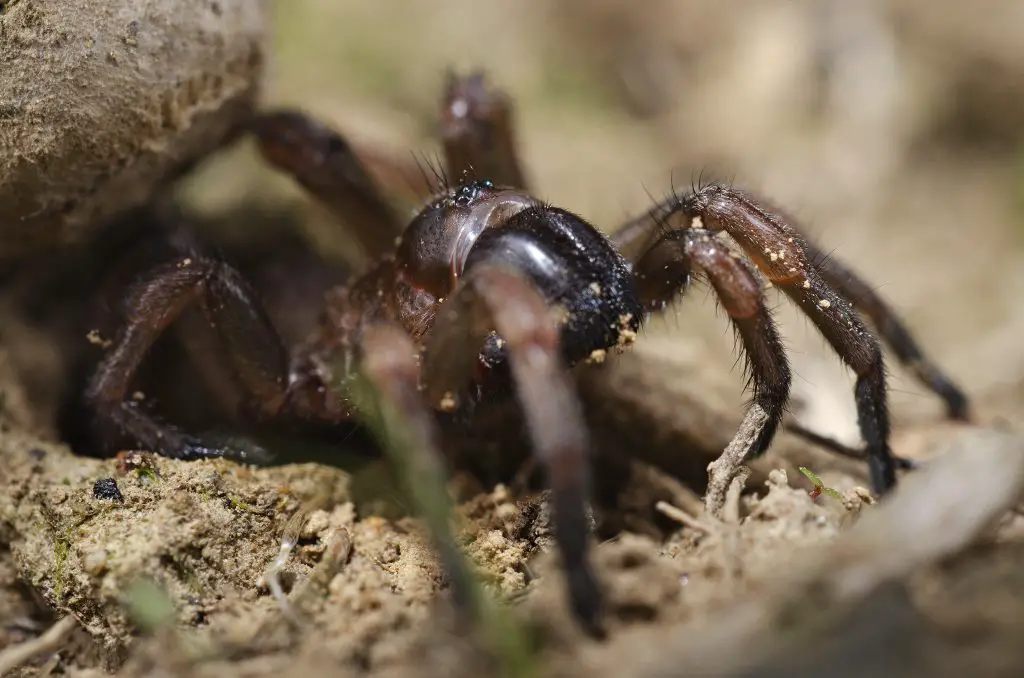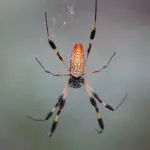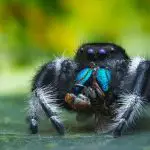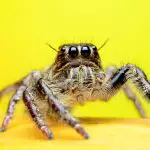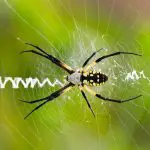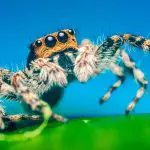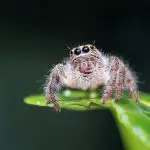Last updated on February 1st, 2023 at 09:59 am
They’re well-known for their unique underground burrows, but what do trapdoor spiders eat? Let’s take a look the dietary habits of these secretive arachnids…
It is always exciting to know about the animal world around us. There are different studies about different species.
The study of spiders and other species in the Arachnida family is called Arachnology. Trapdoor spiders are found worldwide, and included in the infraorder called the Mygalomorphae, where most giant spiders are included. They also happen to be some of the most secretive and poorly-known spiders of all.
They like warm environments. A trapdoor spider lives for 5-20 years. They build tunnels to live in, and most of the time, they stay inside the tunnel. Studies say that they take a long period to mature.
Spiderlings, the young spiders, come out of the tunnel and start their independent lives in their burrows. Trapdoor spiders live independently by searching for food and habitat on their own.
They prefer open and sandy deserts and shady river sides. Let us now discuss the common characteristics and eating habits of trapdoor spiders.
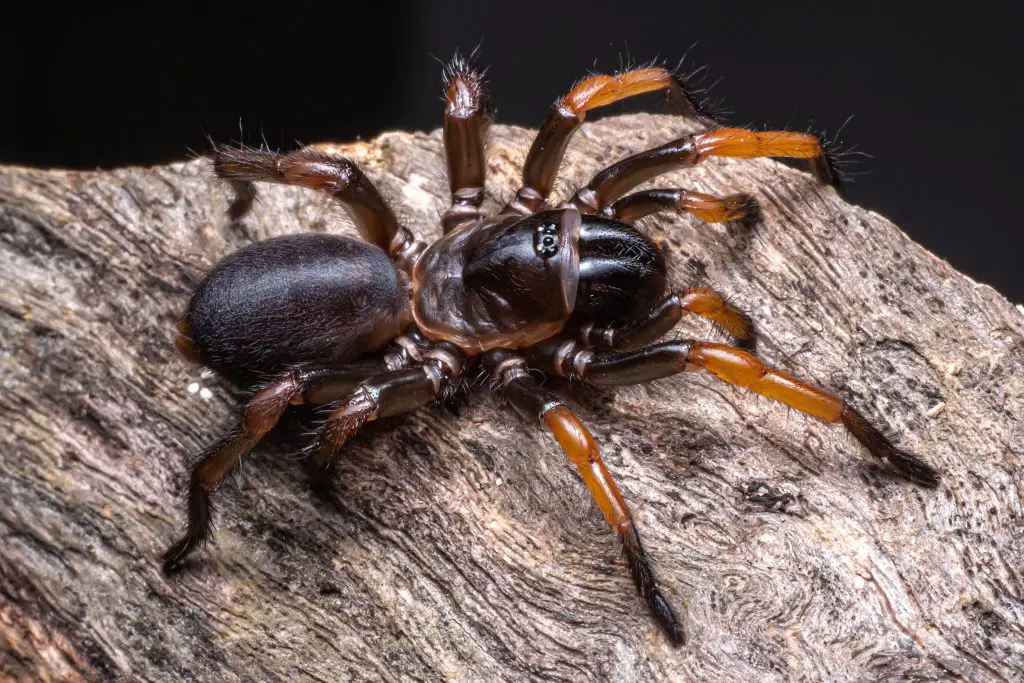
What is the trapdoor spider’s diet?
These spiders are famous in Europe, Asia and South America. They are renowned for their hunting habits. They feed on large terrestrial arthropods, and occasionally they eat small-sized lizards.
Trapdoor spiders are carnivores which means they are strictly meat-eating arachnids. Like most spiders, they have a preference for soft-bodied or defenseless prey. They really don’t like a fight.
Some of their favorite prey items include:
- Crickets
- Grasshoppers
- Isopods
- other, weaker spiders
- beetles
- grubs/caterpillars
- very small lizards and snakes
- Millipedes
- fish (only some very specialised species eat them)
- moths
Overall, there aren’t many types of prey they avoid. Nonetheless, they sometimes spring out and come face to face with something to tough for them to deal with.
In general, you’ll see them go into retreat when they encounter the following:
- Centipedes
- Scorpions
- Parasitoid wasps
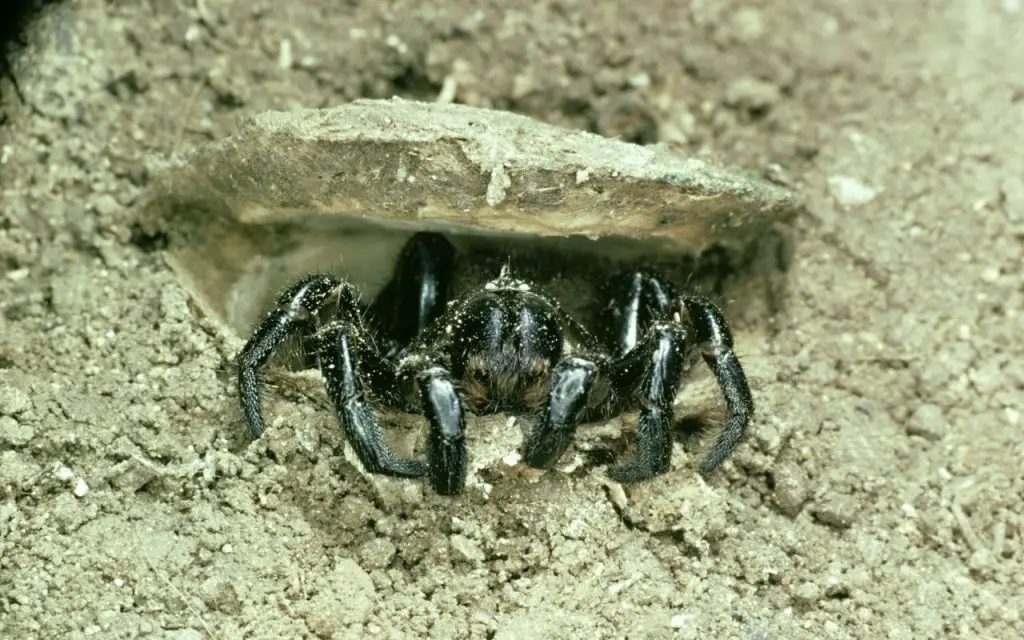
What insects do trapdoor spiders eat?
The trapdoor spiders are clever hunters. As the name says, they are famous for creating ‘trapdoors’ to ambush their prey from. Unlike other spiders, they use speedy reflexes to attract prey.
When it comes to their favorite insect prey, I’ve listed most of them above. Their top three favorites would have to be grasshoppers, crickets and mealworms though in captivity. Truth be told, they’ll eat almost anything in the wild – especially when times get tough in some of the desert environments they inhabit.
Generally speaking, Trapdoor spiders eat a lot of small bugs like millipedes and other spiders. Studies say that they also feed on small fishes, baby birds, snakes, frogs, and mammals like mice.
They have particular appendages called ‘pedipalps’ which help them sense vibrations and their prey’s arrival.
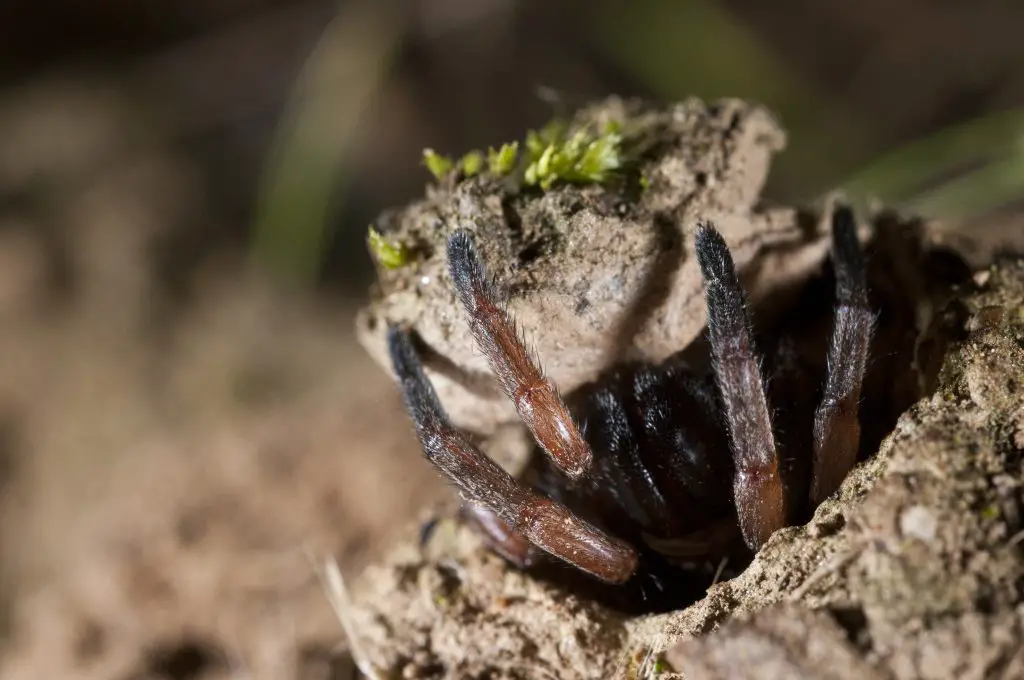
Do trapdoor spiders make silk?
Yes, trapdoor spiders make silk. They make silk-like material to reinforce their burrow. Spiders make this silk from their body organ called spinnerets.
They are skilled designers of their own homes. They create their home in the form of a tunnel. Most such spiders have a unique teeth structure on their chelicerae (fangs). With the help of this, they dig holes or tunnels.
They create the walls of the door with soil and saliva. They furnish doors made of wet soil, leaves, and silk to reinforce the entrance. Spider silk is a protein developed from their own body. They use this silk for different functions, such as shelter, courtship, and trapping prey.
Using the spun from this silk, they create the hinges of the entrance door of their tunnel. They use this silk to seal the entrance hole of the tunnel.
They are active at night time for hunting their prey. So the entrance of their tunnels will be closed in the morning and open at night. At night, they keep the trails of silk threads at the entrance as the trip lines.
When insects or small animals touch these threads, the spider gets vibrations. Immediately they pounce and catch the prey.
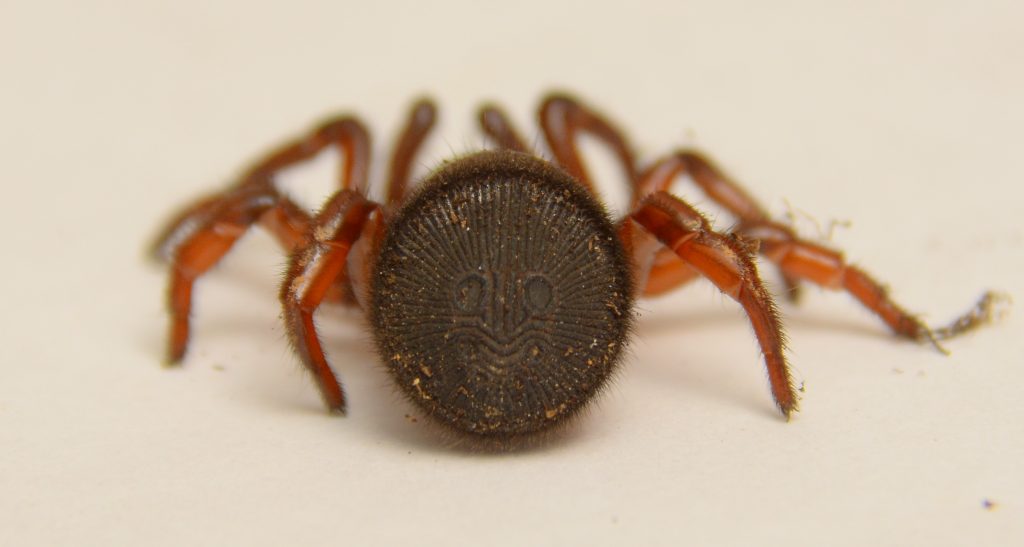
Can you have a trapdoor spider as a pet?
In many regions, trapdoor spiders are exotic pets. This can make them hard to find, as many pet stores do not carry them.
Their body size is almost 2.5 cm long, but some spiders reach 4 cm in length. So they are actually quite easy to house. They’re also hardy and have low care requirements.
So, you can have a trapdoor spider as a pet, if you can find a responsibly sourced one from a specialist exotic pet store. However, this website does not recommend collecting a wild one to keep.
Some species are in decline, and collecting them could further harm their populations. It’s often hard to identify wild ones too – you wouldn’t want to be keeping a pet that you though was a Trapdoor Spider, only to find out it was a deadly Funnel Web Spider!
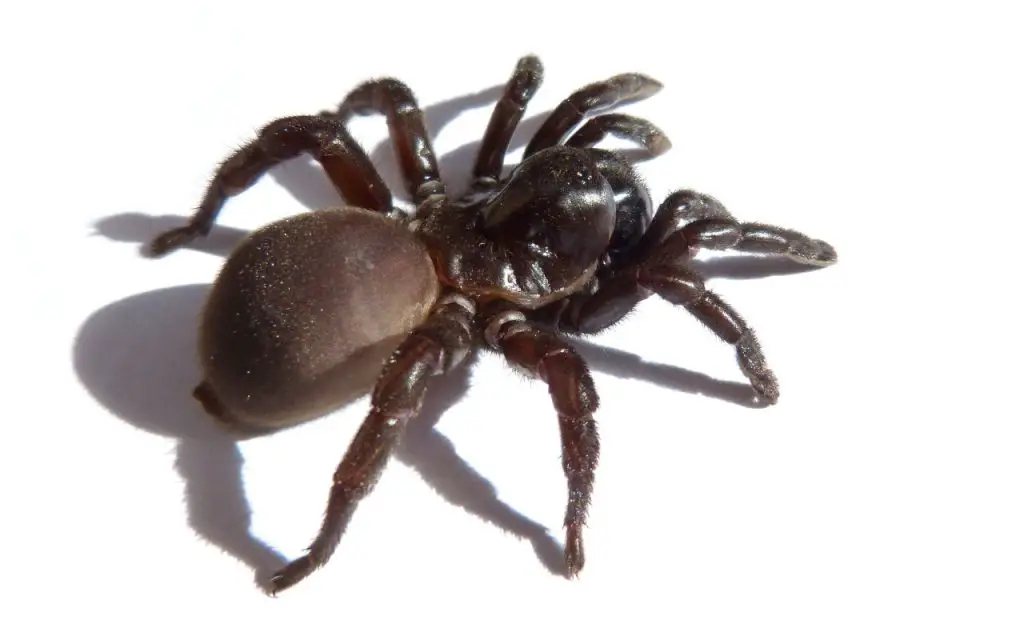
Are trapdoor spiders harmful to humans?
Though some spiders are considered harmful arachnids that inject venom, trapdoor spiders are not very dangerous, per the study reports. This quality makes this creature a good candidate for an exotic pet.
Researchers say that these spiders bite very rarely, but it may be excruciating once it happens. Some trapdoor spiders are mistaken for Funnel-web spiders, especially brown-colored trapdoor spiders.
These brown trapdoor spiders are non-toxic creatures. Their bite may cause pain and swelling only rather than severe health issues.
Are trapdoor spiders aggressive?
Typically trapdoor spiders are very timid. They are not seen as aggressive. If it is attacked or harassed, it exhibits the fangs to scare enemies.
Still, some species found in California are considered aggressive spiders, and experts advise that trapdoor spiders must be handled by experienced people only.
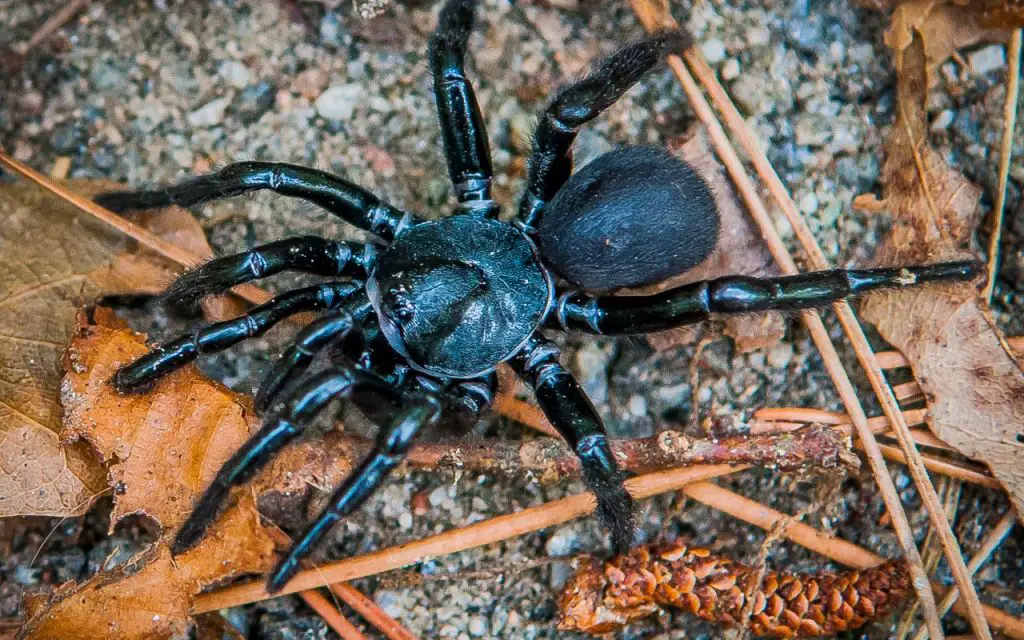
Are trapdoor spiders smart?
Though trapdoor spiders are non-aggressive and non-toxic, they are clever enough to hunt their prey and find their living. They adopt unique techniques for hunting.
They are very alert to recognize the minute vibrations and produce evident escape mechanisms when attacked. They are very smart hunters.
Whether their unique behaviors and adaptations amount to intelligence is a matter of debate. Why don’t you take a look at the facts below, and judge for yourself…
Trapdoor spider fun facts :
- They are called ‘trapdoor’ spiders as they use the doors of their burrow as the trap behind which to ambush their prey. Most of the time, the doors of the tunnel are kept closed.
- They are solitary and long-lived.
- It is challenging to locate a trapdoor spider as they adopt the nature of nearby vegetation and soil as a natural camouflage.
- Female trapdoor spiders travel very rarely. They sit inside the burrow for years!
- Male spiders attract females with the help of specific chemical cues.
- No 16 – was the oldest female trapdoor spider from Western Australia. She died in 2016, and her estimated age is 43 years.
The mating process of trapdoor spiders is interesting. The male spiders of certain species drum on the ground to attract the female.
If the female spider is ready to accept, the male enters the burrow, and the mating process takes place. The female spiders use the spun silk produced from its body to hide the eggs.
They hang this silken sac on the wall and guard the eggs till they hatch. The male spiders are short-lived, as they die soon after mating.
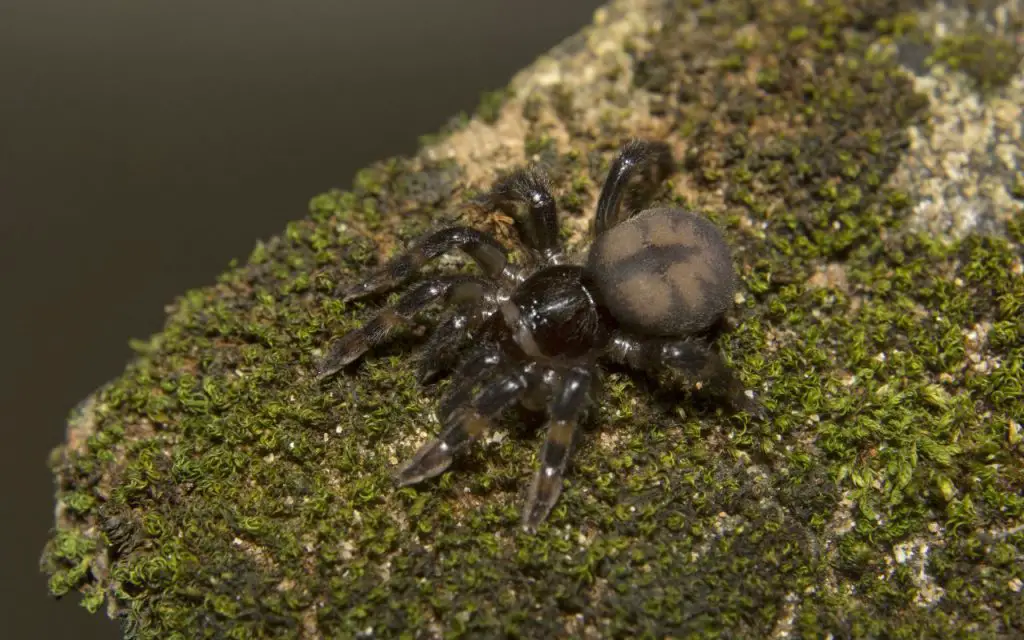
Can trapdoor spiders jump?
Yes, trapdoor spiders can pounce when they want to catch their prey. As soon as they get the minute signs of the arrival of their prey, they leap out from the burrow to attack the insect.
With swift and furious actions, they catch the prey and pierce the fangs into its body to seize the animal or insect. They aren’t great at jumping vertically more than a couple of inches though. So though they can jump, they can’t jump from the ground onto a person, for example.
How many eyes do trapdoor spiders have?
The trapdoor spiders have 8 eyes. Eyes are arranged like a pattern. Two big eyes are in the middle, and three small eyes are on both sides.
Like many spiders, they don’t have great eyesight, nonetheless. It would seem that they probably can’t see more than a few feet, and that they rely more on touch for tackling prey.
FAQ relating to what trapdoor spiders eat
As from the known sources, it is evident that they lead an interesting life pattern. That is why trapdoor spiders are one of the most favorite research topics among zoologists.
Here are a few frequently asked questions regarding trapdoor spiders.
Are trapdoors poisonous?
As per scientific studies and research, trapdoor spiders are non-toxic. They are considered loners and always like to be inside their caves.
They come out only to catch the prey. But if they face an attack from external sources, they display their fangs as a fast reflex action.
In rare cases, they may bite, which can be painful. Sometimes the bitten areas will be swollen with slight color changes.
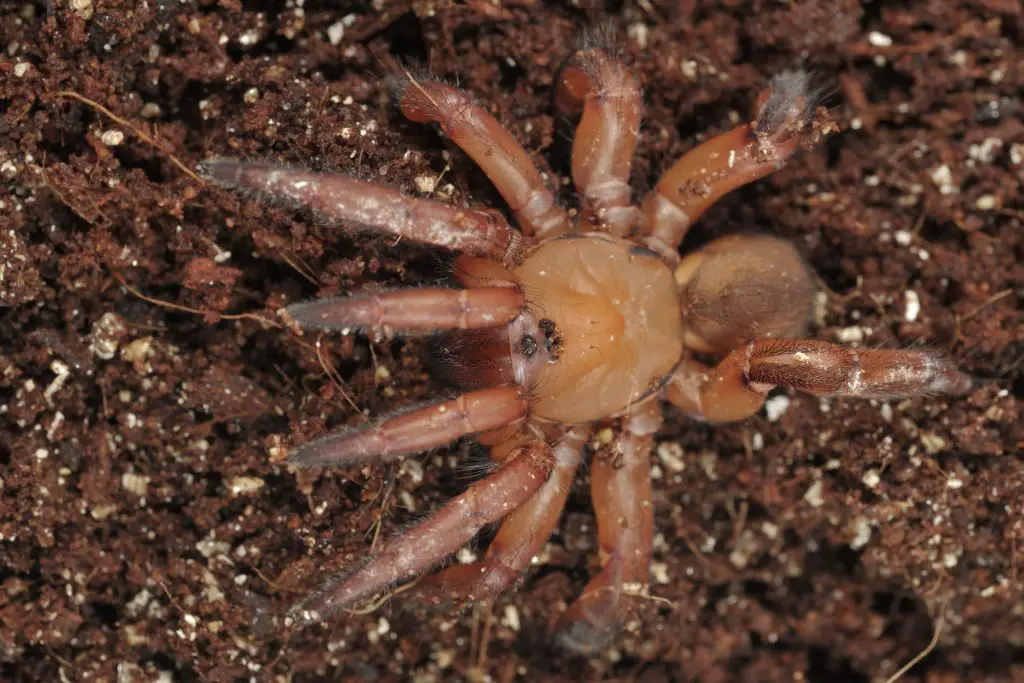
Do trapdoor spiders have 10 legs?
No, the trapdoor spider has only eight legs. Their legs are very thick and short too.
They have two fangs with which they attack insects and other small animals. Their fans are seen with the legs and often mistaken as an extra pair of legs.
Their body consists of two parts, an abdomen and a thorax.

